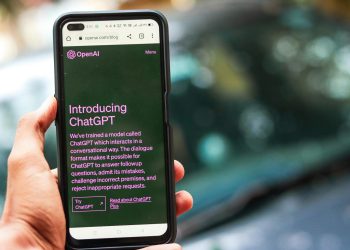Understanding Attention Mechanisms
Attention mechanisms have really spiced things up in the natural language processing (NLP) world, especially with those fancy transformer models. Buckle up as we check out how these mechanisms have grown up and their part in today's deep learning scene.
Evolution of Self-Attention
Self-attention is not just a buzzword; it's become a go-to ingredient in many cutting-edge deep learning recipes, especially in NLP. The paper "Attention Is All You Need" by Vaswani et al. in 2017 shook things up by dropping Recurrent Neural Networks (RNNs) for self-attention techniques.
This shiny thing called self-attention lets models tweak the impact of various bits in an input sequence on-the-fly. And why's that a big deal? Well, the meaning of a word can do a complete 180 depending on its buddies in a sentence or document (Sebastian Raschka's Blog). Capturing those distant relationships and context, transformers have taken the crown in state-of-the-art language understanding systems.
Here's a table showing how the old-school RNNs and hip transformer models differ:
| Model Type | Key Attribute | Strengths | Weaknesses |
|---|---|---|---|
| RNNs | Sequential Processing | Remembers stuff across sequences | Struggles with long-range stuff |
| Transformers | Self-Attention Mechanism | Nails long-range and contextual stuff | Eats up a lot of computing power |
Advantages of Self-Attention Models
Self-attention models bring some cool perks to the table, especially for top-tier NLP tasks. Check out these standout advantages:
-
Dynamic Contextualization: Models using self-attention can gauge the weight of different bits based on context, making them language whizzes (Sebastian Raschka's Blog). This is crucial for things like translating languages and summarizing texts.
-
Efficiency: Why go slow when you can go fast? Unlike RNNs, self-attention ditches the slow-mo sequential bottleneck for some speedier parallel processing.
-
Scalability: The self-attention mechanism isn't just modular; it's scalable, making it a perfect fit for beefing up those large language models like GPT-3 and BERT.
For those itching to dive straight into it, check out our write-ups on transformer models and how do large language models work.
Self-attention's knack for handling massive datasets and intricate language tasks makes it the darling of countless applications, from generative AI models to natural language processing models. It’s kind of a big deal in today's world of deep learning and AI.
The Role of Cross-Attention
Cross-attention is like the secret ingredient in big language models, making stuff talk to each other in smart ways. Here, we look at what sets self-attention and cross-attention apart, and where cross-attention shows its magic.
Self-Attention vs. Cross-Attention: What’s the Deal?
When it comes to language models, it's crucial to know the difference between self-attention and cross-attention. Self-attention sticks to one story, letting different bits of data chat within the same sequence. On the flip side, cross-attention hooks up two different sequences, even if they have different numbers of bits, as long as they fit the same 'size' (Sebastian Raschka's Blog).
| Mechanism | Input Sequences | Use |
|---|---|---|
| Self-Attention | One Sequence | Strengthening ties within the same data batch |
| Cross-Attention | Multiple Sequences | Mixing and matching across different data sets |
This is unlike self-attention models—think BERT model—where every piece looks at every other piece within the same sequence.
How Cross-Attention Works its Magic in Language Models
Cross-attention is big, especially in transformer models, beefing up their skills for tough gigs. A hot spot for cross-attention is in the transformers' decoder. Here, it checks out different bits of the input to spit out nice outputs, key for jobs like translating languages (Medium).
Another cool trick is watermarking in language models. Researchers came up with a watermarking layer using cross-attention to stamp solid watermarks without bloating parameters too much (arXiv). This locks in who-done-it for generated stuff.
Two ways using cross-attention make sure watermarking doesn’t drag down a pre-trained language model. They work with a tag-team system: a watermark embedder that helps create marked text and a watermark extractor that proves it's genuine (arXiv).
So, cross-attention is key in making big language models smarter, helping out with things like:
- Natural language processing models
- Generative AI models
- Language models for information retrieval
Digging into how cross-attention moves the needle shows why it's a big deal in sprucing up language models. For a deep dive on how cross-attention is shaking things up, check out our pieces on how do large language models work and applications of large language models.
Implementation of Attention Mechanisms
Scaled-Dot Product Attention
Alright folks, let’s break the magic behind scaled-dot product attention into plain ol' English. This nifty technique takes center stage in self-attention, especially when we're chatting about transformer models. It made waves thanks to the brilliant minds behind the paper "Attention Is All You Need" by Vaswani et al., 2017. These brainy formulas are the beating heart of all those chatbots and voice assistants talking up a storm.
Here’s how the scaled-dot product attention works. Picture yourself working with three matrices: Query ((\mathbf{Q})), Key ((\mathbf{K})), and Value ((\mathbf{V})). Think of them as the brains behind spotting which words matter most in a sentence.
Here's the lowdown on how it computes attention:
- Smash those Query and Key vectors together with a dot product.
- Tone down those scores by dividing with the square root of the Key's dimension ((\sqrt{d_{k}})). Makes things balanced and fair.
- Run the numbers through a softmax hug to turn them into attention weights.
- Finally, let those attention weights snuggle with the Value vectors to focus on the key elements.
Our showpiece formula looks like this:
[
\text{Attention}(\mathbf{Q}, \mathbf{K}, \mathbf{V}) = \text{softmax}\left(\frac{\mathbf{Q} \mathbf{K}^T}{\sqrt{d_k}}\right) \mathbf{V}
]
This no-nonsense approach makes sure the calculations are snappy while keeping mistakes at bay, a fact vouched by Sebastian Raschka's Blog.
Weight Matrices in Self-Attention
Now, meet the unsung heroes: (\mathbf{W}q), (\mathbf{W}k), and (\mathbf{W}_v). These weight matrices are the buzz in deep learning language models. As models train, these matrices get all the tweaks they need to make sure our input words transform into queries, keys, and values that make sense.
- (\mathbf{W}_q): Turns input words into queries.
- (\mathbf{W}_k): Shapes inputs into keys.
- (\mathbf{W}_v): Fine-tunes inputs into values.
In action, it goes like this:
[
\mathbf{Q} = \mathbf{X} \mathbf{W}q, \quad \mathbf{K} = \mathbf{X} \mathbf{W}k, \quad \mathbf{V} = \mathbf{X} \mathbf{W}_v
]
These weight lifters make sure the story in your sentence remains intact while being spiced up, helping tasks like understanding context or generating language, a thumbs-up from the Sebastian Raschka's Blog. Implementing these weight matrices doesn’t bog down big companies, leaving scaled-dot product attention as the go-to method for cutting-edge models.
For more juicy details on tweaking language models with precision, mosey on over to our resources on transformer models or dive into large-scale language generation.
Transforming Language Models
Self-Attention in Transformers
The magic of self-attention has seriously jazzed up the game in Natural Language Processing (NLP), thanks to the 2017 debut of the transformer architecture. It's like giving your model superpowers to decide which words in a sentence should hog the spotlight and which can chill in the background. This clever trick helps crack the code of language's subtlety and context, previous models like RNNs and LSTMs couldn't quite handle.
Now, in transformer land, self-attention does its thing across entire sequences all at once. This means it's faster than a speeding bullet and can catch those sneaky long-range relations like a pro. The scaled-dot product attention is a fan favorite because it's mega-accurate and speedy in those big transformers (Hairy Goddess).
The Perks of Self-Attention in Transformers:
- Speed Demon: Transformers can tackle whole sequences together, no more waiting in line like RNNs.
- Smart Cookies: They get the lowdown on how words in a sentence play together, which means they totally get it.
- Mega Scalability: Perfect for churning through huge piles of data and tricky challenges.
| Feature | RNNs | Transformers |
|---|---|---|
| Processing Method | One-by-One | All-at-Once |
| Handling Long Sequences | Not So Hot | Rockstars |
| Computational Efficiency | Lags Behind | Zooms Ahead |
If you’re dying to know more about how these transformers strut their stuff, mosey on over to our transformer models page.
Encoder-Decoder Models
Enter the encoder-decoder setup, a game-changer in the world of large language models. This bad boy slaps those self-attention tricks from transformers onto encoding and decoding stages, making it the boss of tasks like translating languages and crunching down text.
In this setup, the encoder buddies up with your input sequence and whips up a juicy context-rich mess. Then, the decoder swoops in, targeting the juicy bits to spit out an output sequence that’s relevant and makes sense. Perfect when you’ve got a huge, info-packed input to deal with.
| Component | Purpose |
|---|---|
| Encoder | Transforms input into a context-heavy gem |
| Decoder | Spins the output, concentrating on key input pieces |
Encoder-Decoder Model Highlights:
- Pinpoint Precision: The decoder zeroes in on the juicy parts, so your output looks sharp.
- Multi-talented: Works like a charm for translating, summarizing, and more.
- Ready for Action: Handles bigger datasets with ease, loving the transformer vibes.
For the full scoop on how these models rock different tasks, check out our piece on pre-trained language models.
Thanks to the leaps in self-attention and encoder-decoder setups, language models today are powerhouses in the Generative AI scene. They’re smarter, faster, and primed to take on whatever tasks you throw their way.
Innovations in Language Model Architecture
Alright folks, today we're diving into the cool stuff happening in language model architecture. It's like laying out a bunch of game-changing blueprints for building mind-blowing tech. We've got to give a big shoutout to the groundbreaking research that's shaken things up and made language processing tasks a whole lot smarter.
Contributions of Key Papers
Let's start with a biggie: "Attention Is All You Need" by Vaswani et al. in 2017. This paper pretty much flipped the script with the transformer architecture. Imagine ditching the fuss of recurrent layers for a slick multi-head attention and positional encoding system. Why's this a game changer? It gets rid of pesky slow-downs in training, making our AI friends not just smart, but fast too. Check out more details on that over here.
| Key Paper | Contribution |
|---|---|
| Vaswani et al. (2017) | Brought us the transformer, waving goodbye to recurrent layers with multi-head attention and positional encoding. |
| Devlin et al. (2018) | Introduced masked-language modeling and next-sentence prediction with BERT. |
| Howard and Ruder (2018) | Got us thinking about pretraining models and transfer learning for tough tasks. |
| Lewis et al. (2019) | Merged encoder and decoder into a powerhouse (think BART). |
Who could forget "BERT: Pre-training of Deep Bidirectional Transformers for Language Understanding" by Devlin et al. in 2018? Say hello to masked-language modeling and next-sentence predictions. With this trick, BERT became a powerhouse in text classification, making sure models sucked up both forwards and backwards context like a sponge.
Howard and Ruder in 2018? They figured out you could pretrain these bad boys and then fine-tune them on specific tasks—kind of like teaching your pet tricks after basic obedience classes. Thanks to them, we got stars like BERT and GPT-4 shining bright.
And then there's "BART: Denoising Sequence-to-Sequence Pre-training" by Lewis et al. in 2019. By mixing encoder and decoder magic, BART pushed the envelope in text generation, translation, and understanding—sort of like giving your translations a turbo boost. Curious? Here's more juice on that.
Impact on Natural Language Processing (NLP)
So, what does all this mean for NLP? Huge steps forward, that's what. With self-attention and cross-attention, language models are now capturing the kind of nuances that make text feel natural. We're seeing massive leaps in how stuff gets translated, generated, and classified. Check out some self-attention coolness here.
| Aspect of NLP | Improvement |
|---|---|
| Text Classification | BERT made accuracy and contextual understanding the new norm. |
| Translation | Transformers smoothed talks with top-notch quality and flow. |
| Text Generation | Models like GPT-3 and BART made systems spit out text that's nice and relevant. |
Thanks to the transformer setup, these models handle complex patterns like a breeze. They're basically the brains of cutting-edge text systems, blurring lines between what's human and what's AI tech.
With the ability to fine-tune models for whatever specific use you need, companies can now pump some serious AI brainpower into everything from chatbots that actually sound helpful to machines that spin out creative content humans can't quite match. Want a deeper look at spinning those dials on pre-trained models? Buckle up for our fine-tuning guide.
Pop this kind of advanced tech into the business toolkit, and you'll be opening up doors to whole new layers of potential, using AI to corner new strategies and hit those goals you didn't think were possible before.
Practical Applications of Large Language Models
Fine-Tuning for Specific Tasks
Large Language Models, or LLMs, are shaking up tech and business with their incredible flexibility. One nifty trick they can do is fine-tuning for specific tasks. This isn't about reinventing the wheel; it's about tweaking these models using a bit of supervised data to get them to nail certain jobs. This not only beefs up their adaptability but also cranks up their smarts for various fields.
| What? | Example Use |
|---|---|
| Copywriting | Whipping up marketing copy, social media chit-chat |
| Text Classification | Reading the room with sentiment analysis, sorting your emails |
| Code Generation | Helping you finish code bits, spotting pesky bugs |
| Knowledge Base Answering | Answering your burning questions in customer support and FAQs |
These nifty uses of LLMs show just how far-reaching their potential is, if we're talking marketing to software jobs. Got your curiosity piqued? Dive into our pre-trained language models article for more scoop.
Versatility in Industry Integration
LLMs aren't messing around—they're making waves across lots of industries. They're here to change up how we do content creation, amp up search engines, and power virtual assistants (AWS). Thanks to their smarts in handling complex contexts, they're becoming business go-to's.
| Industry | What's It Doing? |
|---|---|
| Retail | Giving you spot-on recommendations, chatting with you |
| Healthcare | Decoding medical records, checking out symptoms |
| Finance | Sniffing out fraud, predicting the money game |
| Entertainment | Writing scripts, chatting in games |
Putting LLMs into company workflows can mean better results, happier customers, and fresh new ideas. Curious about the mechanics? Check out our guide on how these models work.
But wait, there's more! LLMs are also making strides in computer vision by using their clever self-attention, which helps in tasks like spotting objects and categorizing images (Medium).
Their impact on language processing is big news, as they help boost performance by catching long-range patterns and context (Medium). Want to know more about how they're changing the game? Peek at our state-of-the-art language models page.
By rolling with LLMs, businesses can open up new directions and achieve success as tech keeps on evolving. Whether it's honing in on specific gigs or shaking up how industries use them, LLMs are proving to be best buddies in pushing the boundaries of innovation and growth.











